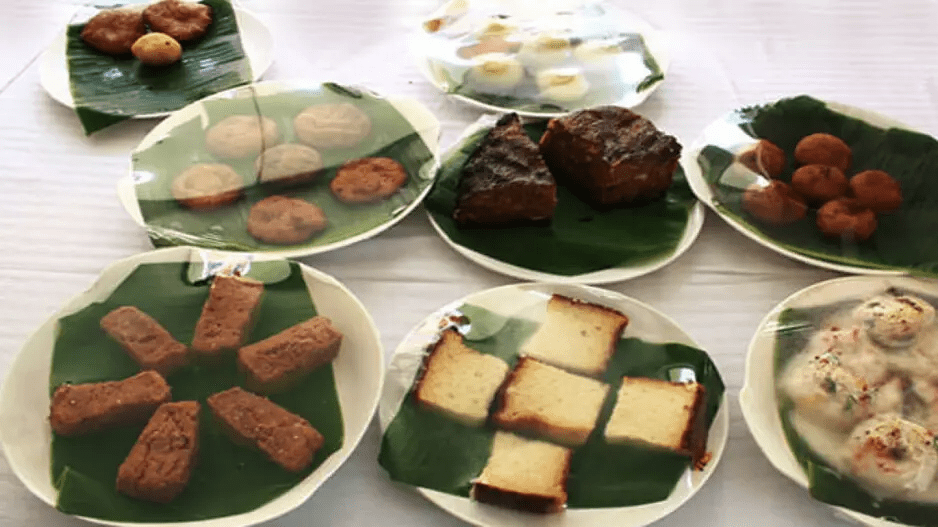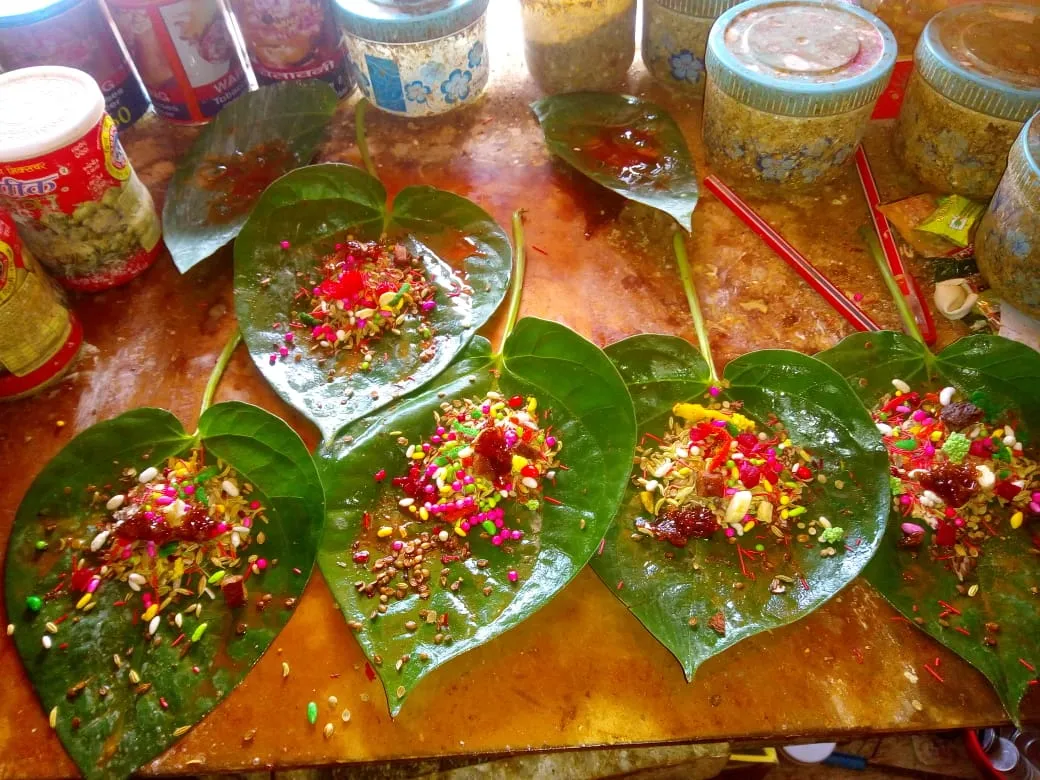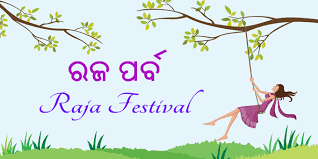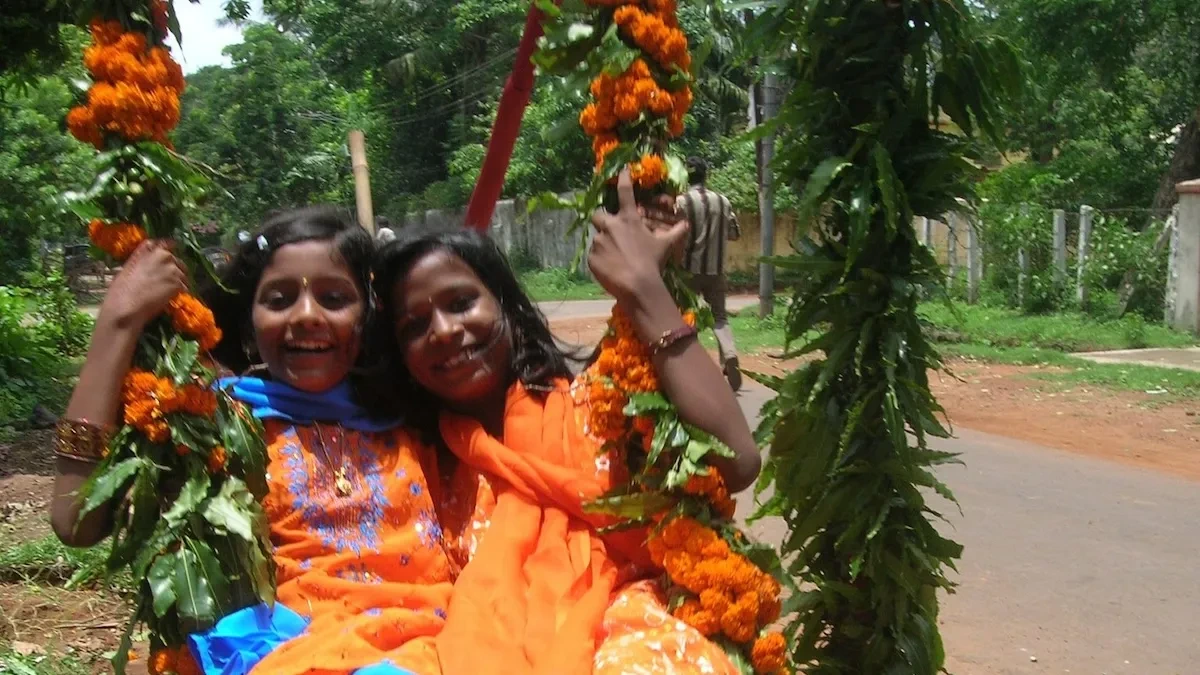The Odisha Tradition Of Raja Parba: A Festival Of The Soil
Raja Parba in Odisha is a festival that celebrates womanhood and the environment and is a symbol of fertility.
In Odisha, we have a tradition of celebrating three days of festivities dedicated to Mother Earth. Probably no other region practices a festival like this. This festival called Raja Parba starts a day before Mithuna Sankranti, called Pahili (first) Raja.
Raja Parba also known as Mithuna Sankranti, is a three-day-long festival of womanhood celebrated in Odisha, India. The second day of the festival signifies beginning of the solar month of Mithuna, from which the season of rains starts
Raja Sankranti Mythology
Raja Sankranti 2025: It is believed that the Hindu earth goddess, Bhumi, one of the consorts of the deity Vishnu, experiences menstruation during the first three days of the festival. The fourth day is called Vasumati Snana, or the ceremonial bath of Bhumi. The term Raja came from the Sanskrit word rajas, which means menstruation, and a menstruating woman is called rajasvala. In the medieval period, the festival became more popular as an agricultural holiday marking the worship of Bhumi, who is venerated as the consort of Jagannath, a regional form of Vishnu. A silver murti of Bhumi is present in the Puri Temple beside Jagannath.
Raja Sankranti 2025
The preparation for the festival starts a day before and that’s called Sajabaaja. The second day is called Raja Sankranti and the third day after Sankranti is called the Sesha Raja.
A symbol of fertility
Raja Parba also celebrates womanhood. For three days Mother Earth is considered to be menstruating as this symbolizes fertility. That’s why for all three days of Raja, the soil is treated with utmost gentleness. All the agricultural works remain suspended. No one walks upon the soil. Young girls and women are treated as a symbolic representation of the earth. Swings are decorated with leaves and flowers for young girls and women to swing on.

Girls are presented with new clothes and all other beauty accessories. Traditional foods like Poda Pitha (baked rice cake with jaggery, coconut, cardamom, etc.) are a must-have delicacy during Raja Parba. Many other mouth-watering traditional Odia delicacies are made and served in every family.
Basumati Snana
On the fourth day, Basumati Snana (bathing of the earth) is observed. The traditional grinding stone is used as a representative of the earth. Turmeric paste is applied to it and then it gets bathed. After that, it is decorated with sandalwood paste, sindoor (vermillion), and flowers, along with other tools used in agriculture.
Prasad is offered and everyone prays to Mother Earth for a bumper harvest. Slowly the traditional ways of celebration are taking a back seat but the rituals are still followed with all its authentic ways and sanctity.
Banaste dakila Gaja, barasake thare asichi Raja,
Asichi raja lo, gheni nua sajabaja !!
Raja Parba, also known as Mithuna Sankranti, is a vibrant 3-day festival celebrated across Odisha to honor womanhood and embrace the beauty of nature. This festival holds deep mythological beliefs and is marked by joyous celebrations, traditional rituals, and mouth watering delicacies.
Raja festival is not just a time for merriment but also a period of rest for Mother Earth. It is believed that during this time, all agricultural activities are suspended, including digging the soil and ploughing the fields. By giving the earth a break, it becomes even more fertile, preparing itself for the upcoming monsoon season.
This festival unfolds over three days, each carrying its unique essence. The first day, known as ‘Pahila Raja’, marks the end of Jestha (Summer) and welcomes the festival with open arms. The second day, ‘Raja Sankranti,’ signifies the arrival of Asadha, the much awaited Monsoon season, bringing hope and rejuvenation to the land. Finally, the third day, ‘Sesa Raja’ or ‘Bhuin Dahana,’ is a time of bidding farewell to the festival, while expressing gratitude to the Mother Earth.
During Raja festival, women don new traditional attire and indulge in delectable dishes prepared by their loved ones. One of the most delightful traditions is the ‘doli khela’. Swings are created using ropes, beautifully decorated, and women joyfully sway on them while breaking into impromptu singing and dancing. This celebration creates an atmosphere of joy, laughter, and togetherness.

One of the highlights of the Raja Festival is the traditional paan, a betel leaf preparation adorned with a delightful assortment of flavors. It was a time to savor this special treat, symbolizing the sweetness and joy of the festival.
Raja Sankranti is celebrated in Odisha as a state government holiday. It falls in the Hindu calendar month of Asadha on the second day of the month. The festival is a celebration of the onset of the monsoon season. Raja Sankranti is the second day of the Pahili Raja festival, which is a three-day festival that can sometimes go on for four days in the state.
The Raja Sankranti Day is also called the ‘Swing Festival‘ because of the many varieties of swings that are hung from tree branches. Girls play on the swings while singing folk songs.
While Pahili Raja is the first day of the festival, Raja Sankranti the second day, the third day is called Basi Raja (past Raja). Raja Sankranti is also called Mithuna Sankranti with the meaning of the name being ”the proper king”.
During the festival, people do not walk barefoot on the earth as it is believed that the earth should be given rest before the monsoon rains fall on it. Women take a break from household chores and farmers take a break from agricultural work.
Everyone indulges in games with the women spending time playing indoor games and playing on the specially constructed swings. These swings are called by different names such as ‘dandi doli’, ‘pata doli’, ”charki doli’‘, and ”Ram doli”. Young women who are single wear their traditional clothes and paint their feet red with a special red dye called ‘alata’.
Vasumati Snana is the final day of the festival, which is sometimes on the fourth day. Here, a grinding stone symbolising the Hindu Goddess of earth, Bhumi, is given a ritualistic bath by women with turmeric paste. It is adorned with flowers afterwards. Seasonal fruits are offered to the Earth Mother Goddess after this. In order to prepare for this, the day before the festival is put aside to clean the grinding stones in the houses and prepare the spices. This day is called ‘Sajabaja’ meaning the preparatory day.
This is a time when people get together to welcome the rains and worship the earth as their mother and goddess who bestows her blessings onto them.
History Of Raja Sankranti
Raja Parba, also known as Mithuna Sankranti, is one of the most popular festivals in the state of Odisha. It is dedicated to Bhuma Devi, the consort of Lord Vishnu, and it is a series of ceremonies celebrating womanhood. The state of Odisha, which is India’s Eastern coastal state, is renowned for its rich heritage and culture. The people of Odisha engage in widely known customary rites but two of the best-known of these rites are the Ratha Yatra, which also takes place in June, and Raja Parba.
Raja Parba is a three-day-long festival dedicated to Bhuma Devi, the Indian goddess who can be described as the Odia version of “Mother Earth.” The main aim of the festival is to honor Mother Bhuma as well as womanhood at large. The story behind the Raja festival is that the goddess of the Earth (Bhuma Devi), around whom much of the festival is centered, is said to undergo her menstrual cycle during this period (June). The word ‘Raja’ is the Odia word for ‘menstruation,’ derived from ‘Rajaswala,’ which is interpreted to mean ‘a menstruating woman.’

Raja Praba is a festival that celebrates the peculiarity of menstruation as an aspect of womanhood. Menstruation is considered a sign of fertility, and so Raja celebrates femininity and the ability of women to give birth to another life. During the Raja Parba, Odia people lay off all construction works or other activities which involve digging up the earth. It is believed that in doing this, they pay homage and respect to Mother Earth.
Significant Features
- Food & Cuisine: Culinary traditions take centre stage during the Raja Festival in Odisha. The festival is marked by the preparation of various special food items that hold cultural and agricultural significance. One such delicacy is Poda Pitha, a sweet cake made from rice, coconut, and jaggery, which enjoys widespread popularity during the festival. Dishes like Poda Arisa, Manda Pitha, and Chakuli Pitha are also lovingly prepared. These delectable treats are crafted using traditional methods and cooked over an open fire, adding a unique flavour and charm to the festive celebrations.
- Attire: The Raja Festival in Odisha is characterised by the significance of traditional dress and attire. Women don vibrant saris adorned with jewellery and embellish their hair with flowers, while men opt for dhotis and Gamchas, a traditional waistcloth. These attires hold deep cultural meaning and symbolise the celebration of womanhood and fertility. Furthermore, the clothing choices also pay homage to the festival’s agricultural roots, as they are crafted from local materials, reflecting the traditional lifestyle of the community.
- Cultural Activities: Music and dance take centre stage during the Raja Festival in Odisha. The festival is brought to life with captivating performances of traditional dance forms and music such as Dalkhai, Ghoda Nacha, and Pala. Women actively engage in group dances and melodiously sing traditional songs, while men skilfully play instruments like dhol and mridanga. These mesmerising music and dance forms not only celebrate the themes of fertility and womanhood but also reflect the community’s rich cultural heritage.
It falls in mid June, the first day is called Pahili Raja, second day is Mithuna Sankranti, third day is Bhudaaha or Basi Raja. The final fourth day is called Basumati snana, in which the ladies bath the grinding stone as a symbol of Bhumi with turmeric paste and adore with flower, sindoor etc.
All type of seasonal fruits are offered to mother Bhumi. The day before first day is called Sajabaja or preparatory day during which the house, kitchen including grinding stones are cleaned, spices are ground for three days. During these three days women and girls take rest from work and wear new Saree, Alata, and ornaments. It is similar to Ambubachi Mela.
The most popular among numerous festivals in Odisha, Raja is celebrated for three consecutive days. Just as the earth prepares itself to quench its thirst by the incoming rain the unmarried girls of the family are groomed for impending matrimony through this festival. They pass these three days in joyous festivity and observe customs like eating only uncooked and nourishing food especially Podapitha, do not take bath or take salt, do not walk barefoot and vow to give birth to healthy children in future.
The most vivid and enjoyable memories one has of the Raja gaiety is the rope-swings on big banyan trees and the lyrical folk-songs that one listens from the nubile beauty enjoying the atmosphere.
To celebrate the advent of monsoon, the joyous festival is arranged for five days by the villagers. Though celebrated all over the state it is more enthusiastically observed in all over Odisha but celebrated with much fervor across the coastal districts. The first day is called “saja baja”, second day is called “Pahili Raja“, third is “Raja Sankranti“ and fourth is “Bhumi Dahana or Basi Raja“. And fifth is Basumati snana
According to popular belief as women menstruate, which is a sign of fertility, so also Mother Earth menstruates. So, all three days of the festival are considered to be the menstruating period of Mother Earth. During the festival, all agricultural operations remain suspended. As a mark of respect towards the Earth during her menstruation days, all agricultural works comes to a standstill during these days. Significantly, it is a festival of the unmarried girls, the potential mothers. They all observe the restrictions prescribed for a menstruating woman.
The very first day, they rise before dawn, do their hair, anoint their bodies with turmeric paste and oil and then take the purificatory bath in a river or tank. Peculiarly, bathing for the rest two days is prohibited. They don’t walk bare-foot, do not scratch the earth, do not grind, do not tear anything apart, do not cut and do not cook. During all the three consecutive days, they are seen in the best of dresses and decorations, eating cakes and rich food at the houses of friends and relatives, spending long cheery hours, moving up and down on improvised swings, rending the village sky with their merry impromptu songs.
The swings are of different varieties, such as ‘Ram Doli’, ‘Charki Doli’, ‘Pata Doli’, ‘Dandi Doli’ etc. Songs specially meant for the festival speak of love, affection, respect, social behaviour and everything of social order that comes to the minds of the singers. Through anonymous and composed extempore, much of these songs, through sheer beauty of diction and sentiment, has earned permanence and has gone to make the very substratum of Odisha’s folk-poetry.
While girls thus scatter beauty, grace and music all around, moving up and down on the swings during the festival, young men give themselves to strenuous games and good food, on the eve of the onset of the monsoons, which will not give them even a minute’s respite for practically four months making them one with mud, slush and relentless showers, their spirits keep high with only the hopes of a good harvest.
As all agricultural activities remain suspended and a joyous atmosphere pervades, the young men of the village keep themselves busy in various types of country games, the most favourite being ‘Kabadi’. Competitions are also held between different groups of villages. All nights ‘Jatra’ performances or ‘Gotipua’ dances are arranged in prosperous villages where they can afford the professional groups. Enthusiastic amateurs also arrange plays and other kinds of entertainment
Raja is an agriculture oriented festival, mostly observed in the coastal districts of Orissa for three days. The last day of month “Jestha” is known as “Pahili Raja” and the first day of month “Asadha” is Raja Sankranti (Mithuna Sankranti) from which rainy season starts. It also inaugurates the agricultural year all over Orissa which marks the moistening of summer parched soil with the first shower of monsoon making it ready for productivity.
The second day of “Asadha” is known as “Bhuin Dahana”. To celebrate the advent of monsoon the joyous festival is arranged for three days. Even in some places of Orissa the fourth day of Raja festival is also celebrated in the name of “Basumata Puja”. During this festival Mother Earth or “Basu Mata” is considered to be a menstruating woman. Hence digging of soil or tempering it in any way is strictly prohibited. The Mother Earth is said to undergo pollution due to menstruation and given rest just like a woman imposed with several restrictions.
Visit Our Website for more articles related to General Awareness.
